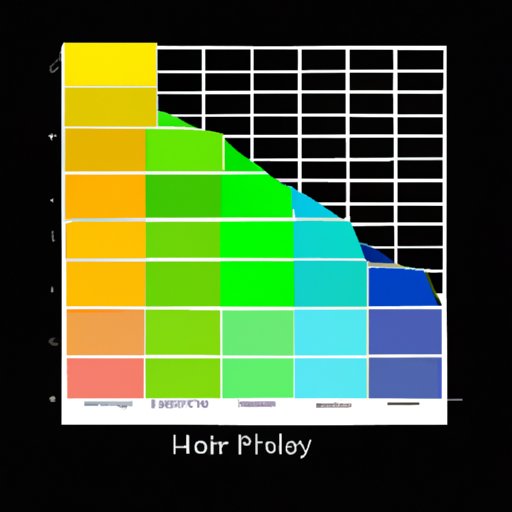Introduction
The term “histogram” can be intimidating for photographers who are new to the field. However, it is actually quite simple to understand and interpret, and it is an invaluable tool for improving your photos. In this article, we will explore what a histogram is, how it helps photographers understand their images, and how to use it for better photos.
A Beginner’s Guide to Histogram Reading
The histogram is a graph that displays the tonal range of a photograph. It shows the distribution of tonal values from black (shadows) to white (highlights). By looking at the histogram, photographers can see if they are correctly exposing their images and get a better idea of how they should adjust their settings.
Understanding the basics of histograms in photography is essential for any photographer. The left side of the histogram represents the shadows, the midtones are in the middle, and the right side represents the highlights. The height of the graph indicates how much of each tone is present in the image. If the graph is low, there are fewer tones; if it is high, there are more tones.
The purpose of a histogram in photography is to give you an accurate representation of the tonal range of your image. By looking at the graph, you can tell if your image has too many shadows or too many highlights, or if it is properly exposed. You can also see if there are areas of the image that are too bright or too dark, and make adjustments accordingly.
Mastering Histograms for Better Photos
Once you understand the basics of histogram reading, the next step is to master the art of interpreting a histogram. To do this, you need to understand the different types of histograms in digital photography. There are three main types of histograms: luminosity, RGB, and color.
Luminosity histograms display the overall brightness of an image. They are helpful for determining if the image is correctly exposed or if it needs to be adjusted. RGB histograms show the red, green, and blue channels of an image separately. Color histograms display the saturation of colors in an image. They are useful for seeing if certain colors are over- or under-exposed.
A photographer’s guide to interpreting histograms starts with understanding the different types of histograms and how they can help you create better images. Once you have a grasp on the basics, you can begin to analyze the data in the histogram and make adjustments to your images accordingly. For example, if the highlights are too bright or the shadows are too dark, you can adjust the exposure to correct the problem.
Conclusion
In conclusion, histograms are an invaluable tool for any photographer. They provide a wealth of information about an image and can help you make the necessary adjustments to create better photos. Understanding the basics of histogram reading and mastering the art of interpreting them is essential for any photographer who wants to take their photography to the next level.
This article has provided a beginner’s guide to histogram reading in digital photography. We have discussed what a histogram is and how it can help photographers understand their images. We have also explored the different types of histograms and how to interpret them for better photos. Finally, we have summarized the key points and recommended further research for those wishing to take their photography skills to the next level.
(Note: Is this article not meeting your expectations? Do you have knowledge or insights to share? Unlock new opportunities and expand your reach by joining our authors team. Click Registration to join us and share your expertise with our readers.)
